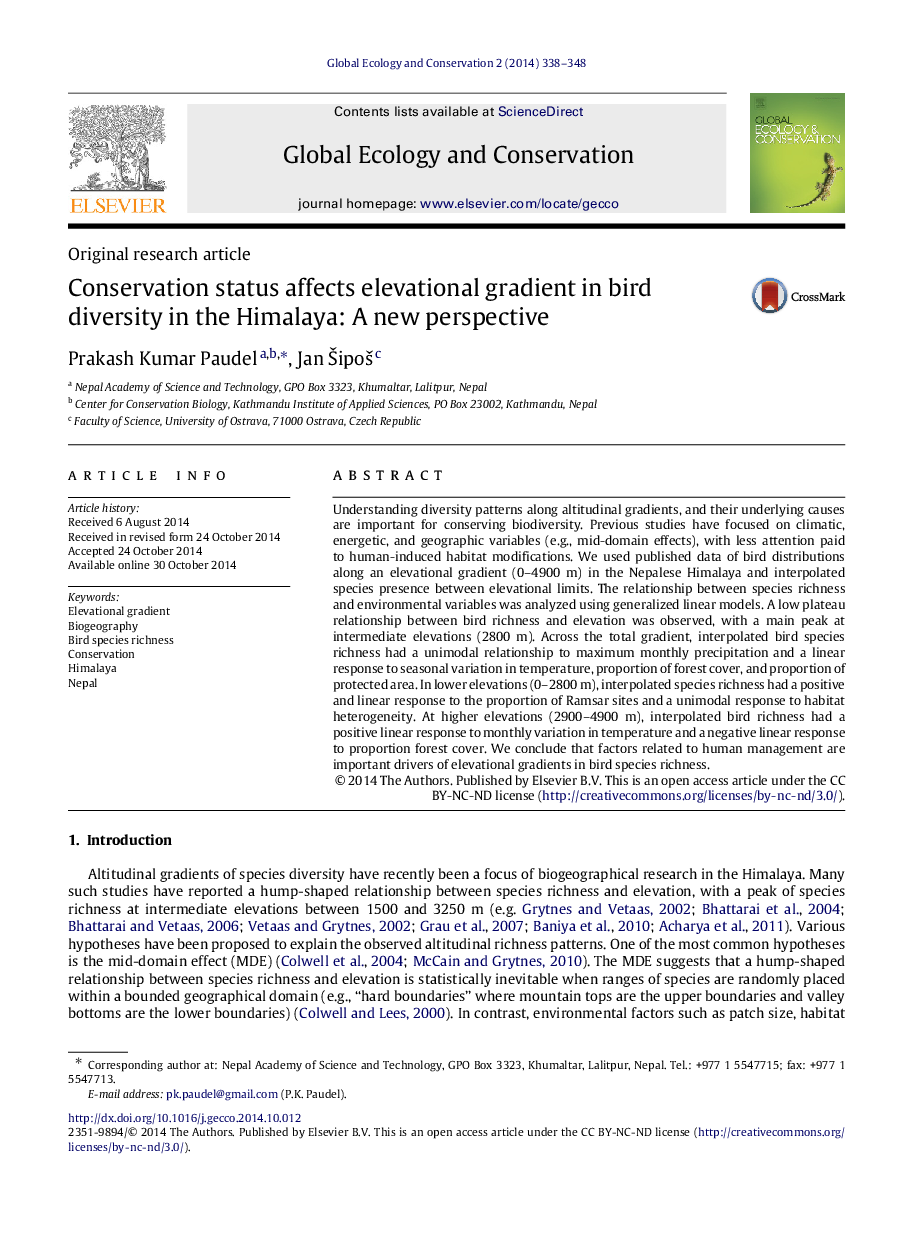| Article ID | Journal | Published Year | Pages | File Type |
|---|---|---|---|---|
| 4379695 | Global Ecology and Conservation | 2014 | 11 Pages |
Understanding diversity patterns along altitudinal gradients, and their underlying causes are important for conserving biodiversity. Previous studies have focused on climatic, energetic, and geographic variables (e.g., mid-domain effects), with less attention paid to human-induced habitat modifications. We used published data of bird distributions along an elevational gradient (0–4900 m) in the Nepalese Himalaya and interpolated species presence between elevational limits. The relationship between species richness and environmental variables was analyzed using generalized linear models. A low plateau relationship between bird richness and elevation was observed, with a main peak at intermediate elevations (2800 m). Across the total gradient, interpolated bird species richness had a unimodal relationship to maximum monthly precipitation and a linear response to seasonal variation in temperature, proportion of forest cover, and proportion of protected area. In lower elevations (0–2800 m), interpolated species richness had a positive and linear response to the proportion of Ramsar sites and a unimodal response to habitat heterogeneity. At higher elevations (2900–4900 m), interpolated bird richness had a positive linear response to monthly variation in temperature and a negative linear response to proportion forest cover. We conclude that factors related to human management are important drivers of elevational gradients in bird species richness.
